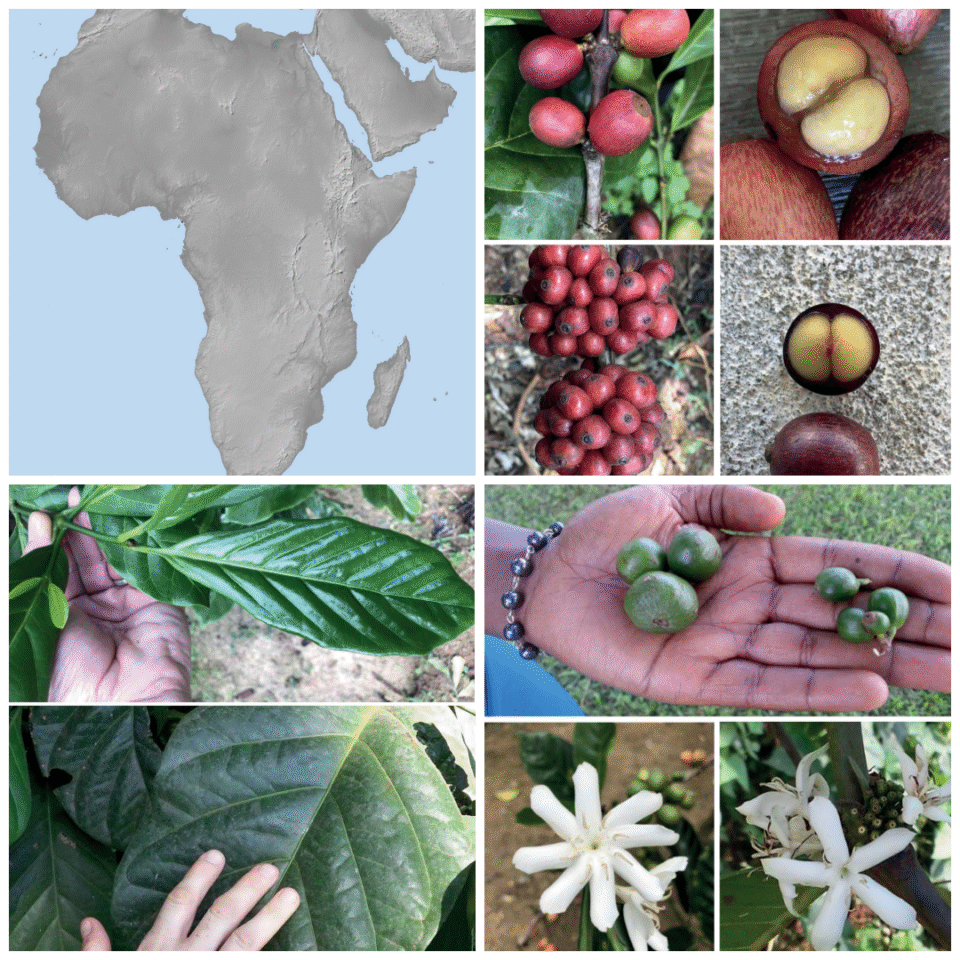Dubai, 12 August 2025, (Qahwa World) – A landmark study published in Nature Plants (DOI: 10.1038/s41477-025-02073-y) has redrawn the coffee world’s genetic map.
Researchers led by A.P. Davis have confirmed—through high-resolution genomic, morphological, and ecological analyses—that what was long considered a single species, Coffea liberica, is actually three distinct species:
-
C. liberica (Liberica)
-
C. dewevrei (Excelsa)
-
C. klainei
This bold reclassification raises the official number of known coffee species from 131 to 133, ending decades of taxonomic uncertainty and opening new opportunities for coffee breeding, cultivation, and conservation—especially in the face of climate change.
From One to Three: How the Split Was Proven
The team sequenced 353 nuclear genes across 55 accessions using the Angiosperms353 target capture kit, and examined 2,240 SNPs, morphology, and geographic distribution.
The results revealed three monophyletic clades, each genetically distinct and occupying its own ecological range:
-
C. liberica (Liberica): Wild in upper West Africa—Sierra Leone, Liberia, Ivory Coast, Ghana, Nigeria.
-
C. dewevrei (Excelsa): Native to Central Africa—Republic of the Congo, Cameroon, DRC, Central African Republic, South Sudan, Uganda.
-
C. klainei: Endemic to West-Central Africa—Cameroon, Gabon, Republic of the Congo, Cabinda.
Why This Matters for Farmers
Though Liberica and Excelsa together make up less than 0.01% of global coffee exports (under 1,000 tonnes in 2024), production is being upscaled in Uganda, South Sudan, India, Vietnam, Malaysia, the Philippines, Indonesia, and even the Pacific.
The two cultivated species offer complementary advantages:
C. dewevrei (Excelsa)
-
Higher yield, more flowers per node.
-
Smaller, Arabica-like seeds (9.3 × 6.6 mm) with thinner pulp and parchment—better outturn and compatibility with existing Arabica/Robusta post-harvest systems.
-
Grows at 500–1,200 m, cooler climates (22–25 °C), lower rainfall (1,500–1,800 mm).
-
Notable drought tolerance, making it a candidate to replace robusta in warming climates.
C. liberica (Liberica)
-
Larger seeds (12.6 × 8.4 mm), distinct flavor profiles for niche markets.
-
Thrives at 10–500 m, hotter climates (24–27 °C), high rainfall (2,000–4,000 mm), and more seasonal precipitation.
-
Historically valued for leaf rust resistance and adaptation to lowland tropics.
The study also suggests hybrid potential between Liberica and Excelsa—offering breeders the chance to combine Excelsa’s yield with Liberica’s resilience.
Morphology and Climate Niches
The paper’s Table 1 shows clear physical distinctions:
-
Excelsa: Longer, broader leaves; smaller fruits; thinner pulp (0.31 mm parchment vs 0.57 mm in Liberica).
-
Klainei: Morphologically closer to Liberica but with sessile, unbranched inflorescences and narrowly ellipsoid fruits.
Climatically, Liberica’s tolerance for seasonal rainfall suits regions with pronounced wet/dry cycles, while Excelsa thrives in more consistent rainfall zones, often riverine or gallery forests.
A Conservation Wake-Up Call
The refined species ranges reveal a much smaller natural footprint:
-
C. liberica’s Extent of Occurrence (EOO) drops from 6.8 million km² to 352,310 km² (−94.8%).
-
Area of Occupancy (AOO): now just 52 km².
This could move Liberica from “Least Concern” to Vulnerable under IUCN criteria.
C. klainei also faces habitat loss; C. dewevrei is less threatened but still impacted by deforestation.
Wild populations hold irreplaceable genetic diversity essential for climate-resilient breeding—losing them could weaken the coffee sector’s future adaptability.
The Bigger Picture for the Coffee Industry
By clarifying where Liberica ends and Excelsa begins, the study equips:
-
Breeders with accurate genetic boundaries to target traits.
-
Farmers with species better matched to their climate and elevation.
-
Conservationists with precise maps to protect threatened wild populations.
As Arabica and Robusta face climate stress, these redefined Liberica species could anchor a more diverse and resilient coffee supply—if the industry acts now to invest in breeding, cultivation trials, and habitat conservation.
Reference: Davis, A.P. et al. (2025). Genomic data define species delimitation in Liberica coffee with implications for crop development and conservation. Nature Plants. DOI: 10.1038/s41477-025-02073-y.
